The sources of information about Henry Christian Geyer are From Slate to Marble Volume II: Gravestone Carving Traditions in Eastern Massachusetts 1750-1850 by James Blachowicz, Memorials For Children of Change: The Art of Early New England Stonecarving by Dickran and Ann Tashjian, and Gravestones of Early New England and the Men Who Made Them, 1653-1800 by Harriette Merrifield Forbes. Blachowicz’s book can be found at http://graverpress.com; the books by Forbes and the Tashjians are out of print.
Henry Christian Geyer was born in Germany in 1727. He emigrated to America in the early 1750s, settling in Boston and marrying a woman named Thankful Bolter in 1757. He began advertising his stone-cutting services in 1759 and became one of the most interesting carvers of his era; in the words of Harriette Merrifield Forbes Geyer “burst onto the town with originality and genuine vivacity.” In his advertisements, Geyer offered marble tables, chimney moldings, hearth jambs, door and window frames for brick houses, and busts and figures of people and animals in addition to gravestones. The last few items, in addition to the originality of his gravestone carving, suggest that Geyer saw himself as an artist as much as a craftsman (although the Tashjians suggest that Geyer’s figures were closer to kitsch than fine art).
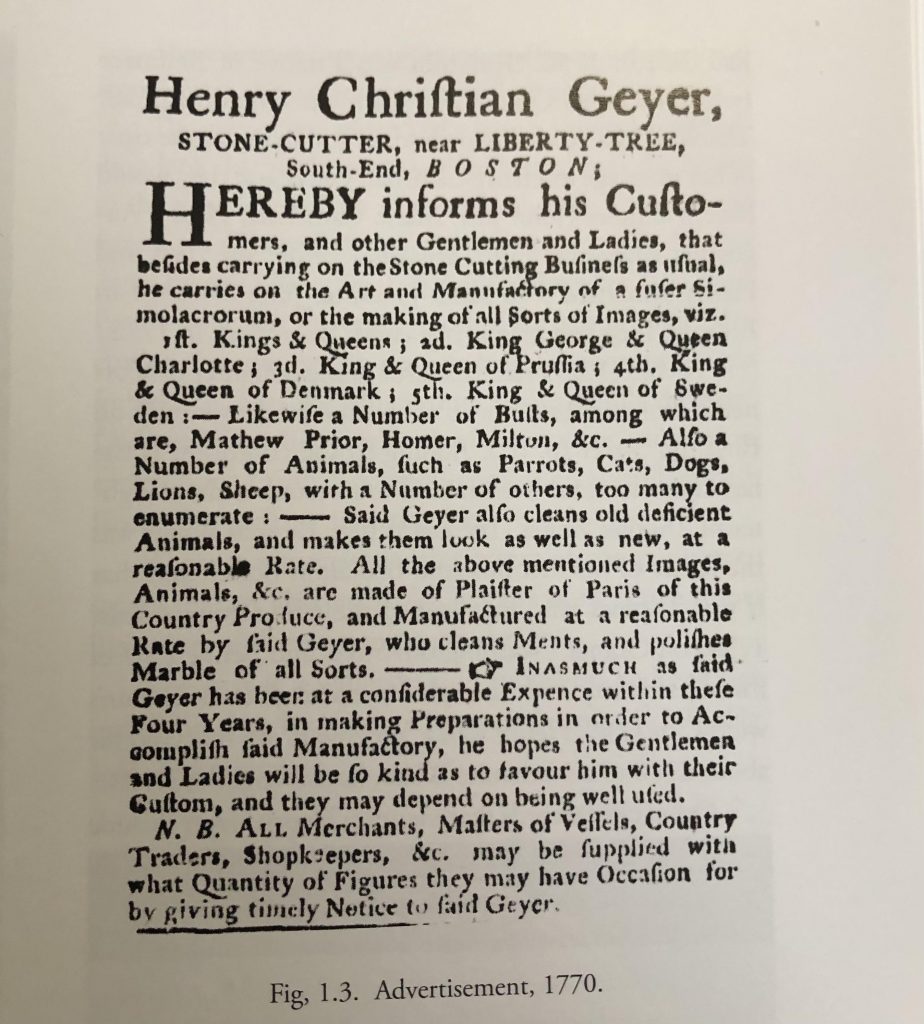
Blachowicz attributes 205 gravestones to Geyer, mostly in Massachusetts and Connecticut, with a few in Maine, one in Rhode Island, one in New Hampshire, and one that somehow made it to East Moriches, New York. He attributes one stone in RMBG to Geyer, that of Lieutenant Thomas Pratt (1780). The nearby stone of Polley Hall (1781) bears a death’s head skull that is nearly identical to the one found on Thomas Pratt’s stone. While this may have been carved by Geyer, it’s also possible that it may have been done in imitation. Geyer’s brother George Ludwig and his son John Just were also carvers, and John imitated his father’s style.
When Geyer began carving gravestones he worked in the same styles that his contemporaries had established, but even when working with familiar images his originality was apparent. His winged cherubs often featured unique expressions or design elements that stood out, for example the dramatic upturned wings on the Josiah Roggels stone (1761, Quincy).
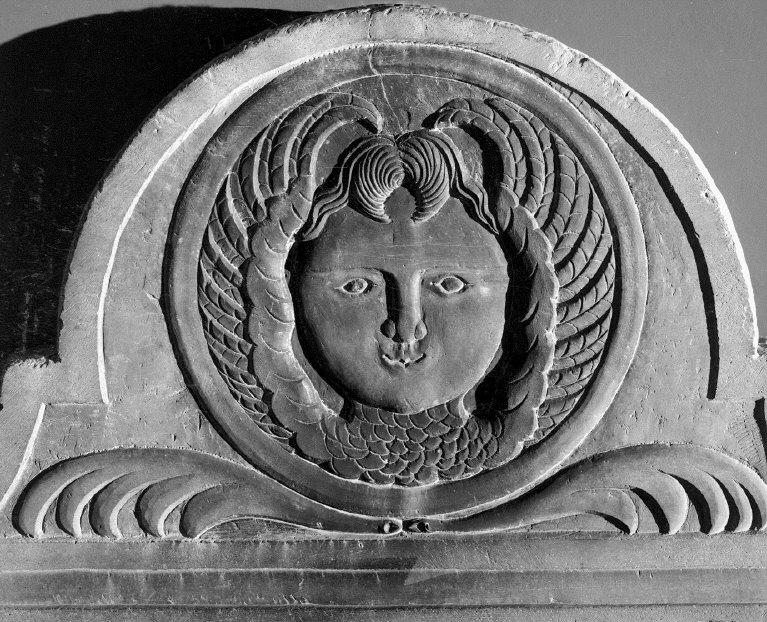
Geyer’s creativity truly flourished in the late 1760s and throughout the 1770s. Some of his more unique creations include a winged cherub looking down at a body in an open coffin (Sarah Townsend, 1763, Needham), and twin cherubs carved in profile, as can be seen on the stone for Seth Sumner (1771, Milton).
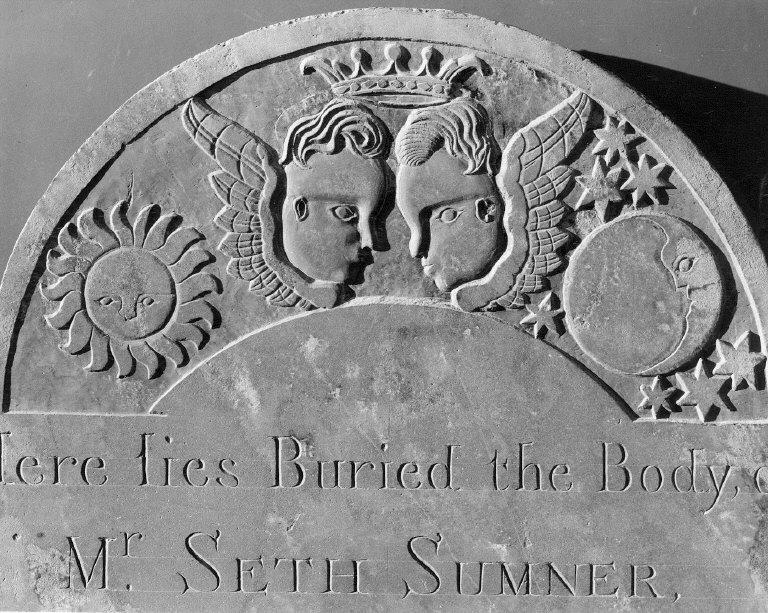
Geyer’s style reached it’s most elaborate expression in one of New England’s most famous gravestones, his stone for Susanna Jayne (1776) in Marblehead’s Old Burial Hill, which James Blachowicz calls a tour-de-force. It’s not certain what inspired Geyer to go so overboard on this stone, which features collage of symbolic elements: cherubs, bats, a laureled and robed skeleton with a scythe, the sun and moon, an hourglass propped up by bones, and an “ouroboros” – a snake swallowing it’s tail.
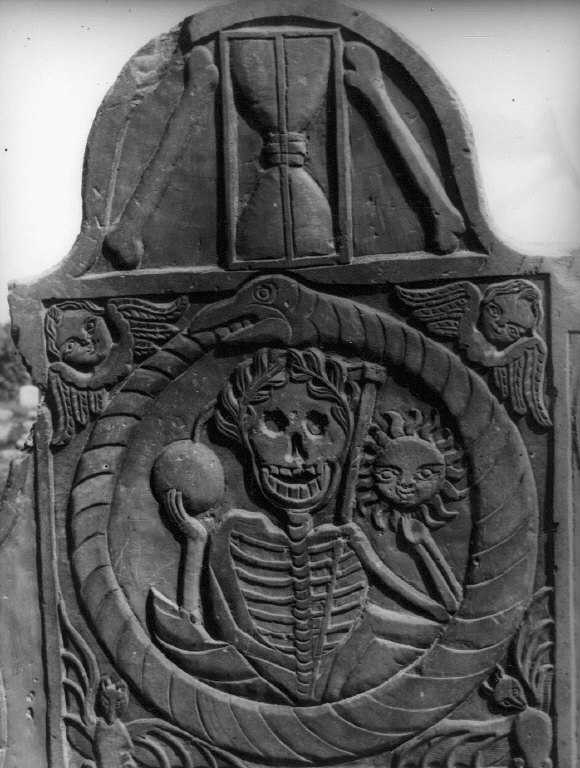
Unfortunately the Geyer stones in RMBG do not approach the flights of fancy found in his creative period. Both feature a simple death’s head skull which matches stones that Forbes bluntly declares were made for “simple tastes or flat wallets.” Geyer carved skulls like this throughout his career, and it’s shocking to place these uninspired stones next to his more intricate work.
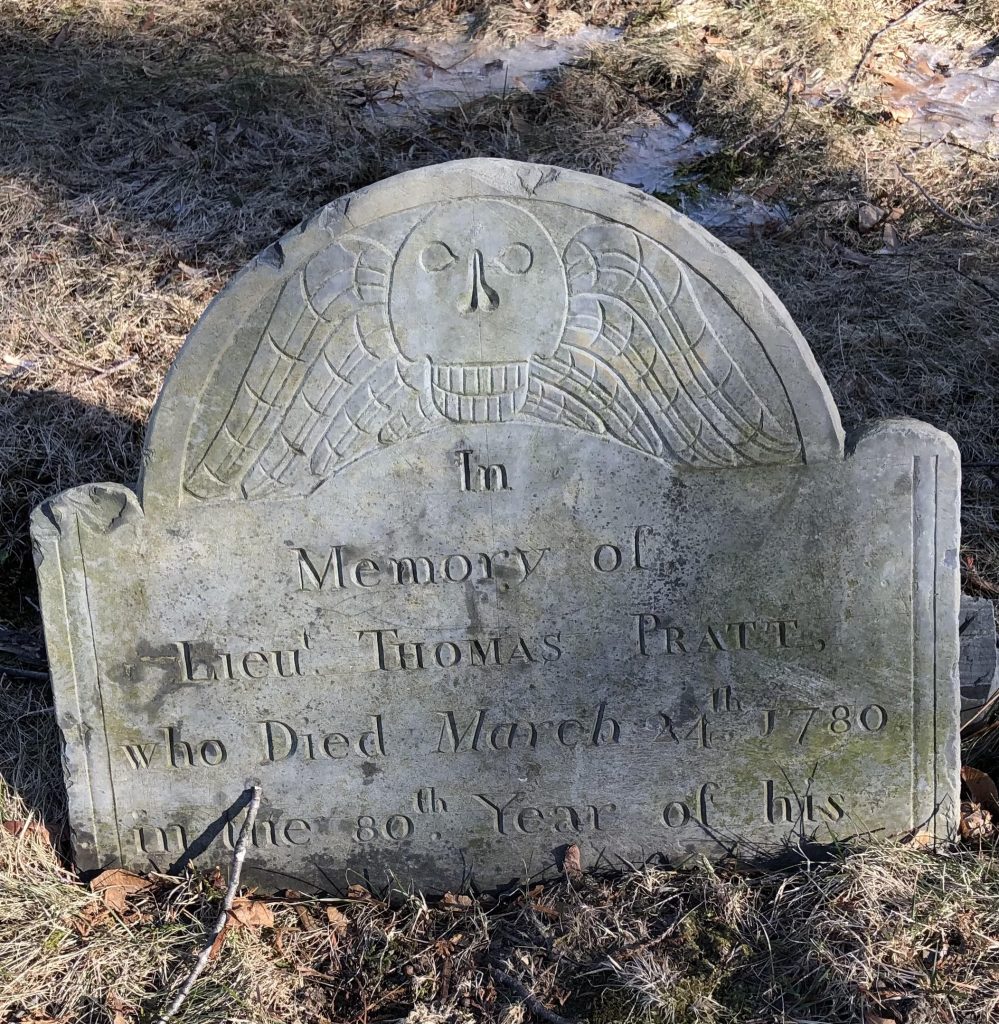
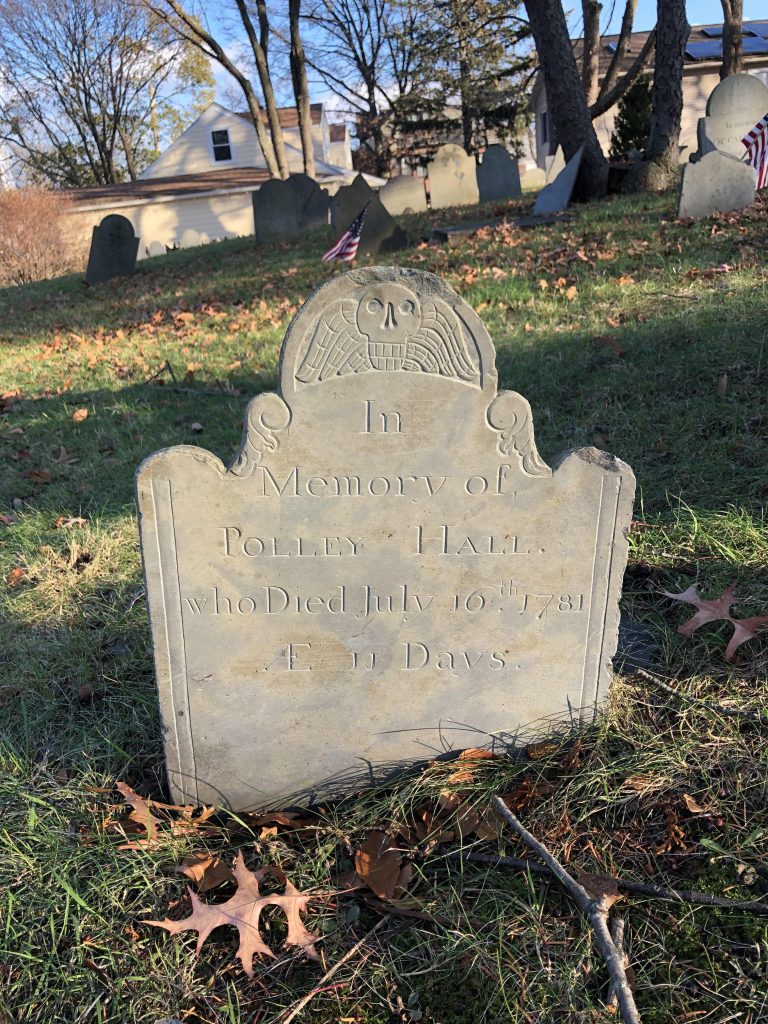
Henry Christian Geyer died in 1785 and his business was taken over by his son John Just Geyer. No gravestone exists for Geyer, leading some to surmise that he is buried with his mother and sister in Tomb 22 of Boston’s Central Burying Ground.
Researched and written by Brendan O’Brien, December 2020.
